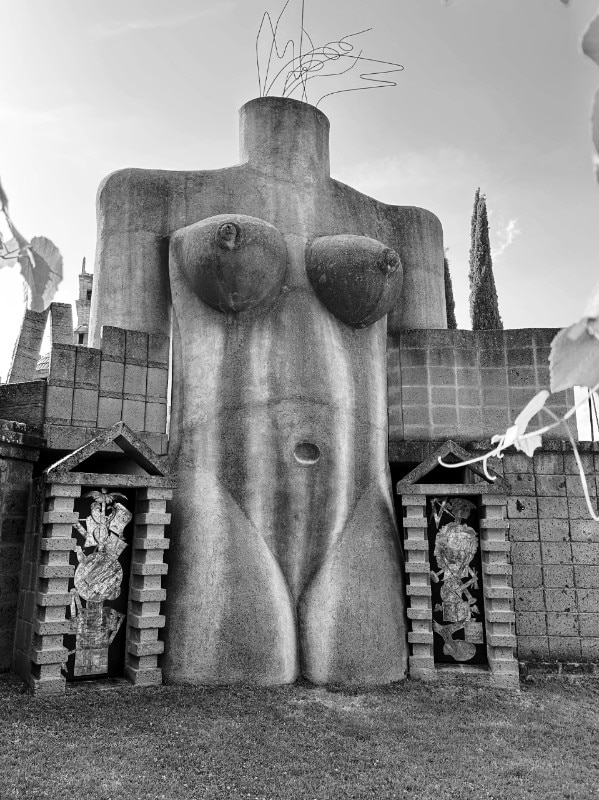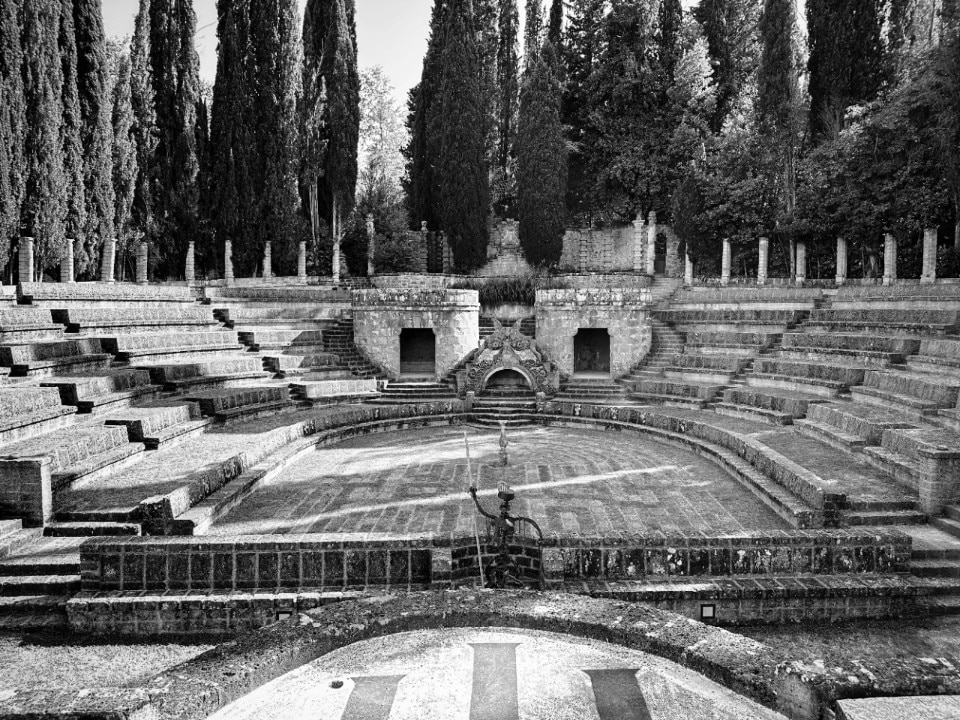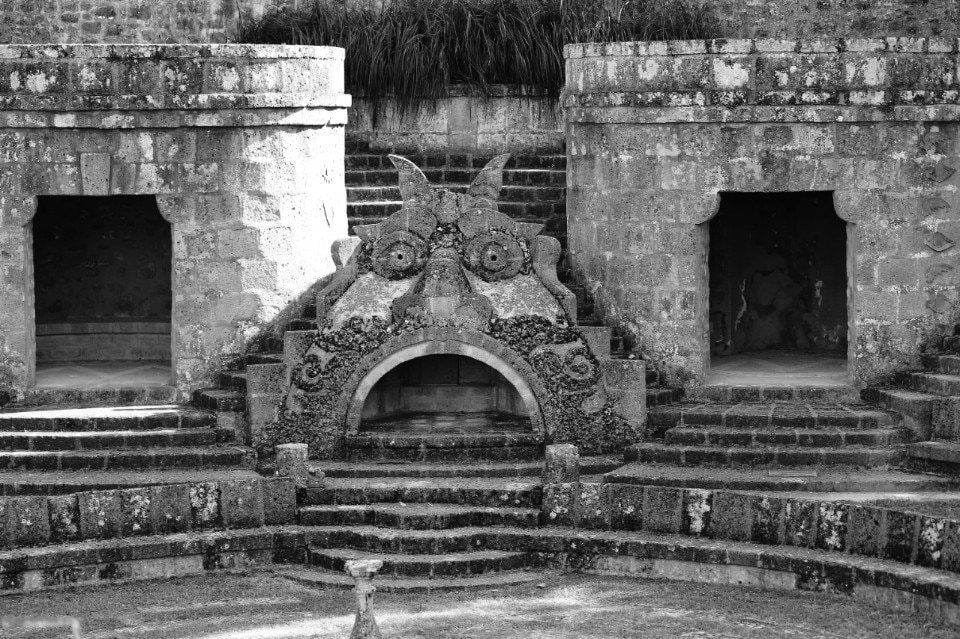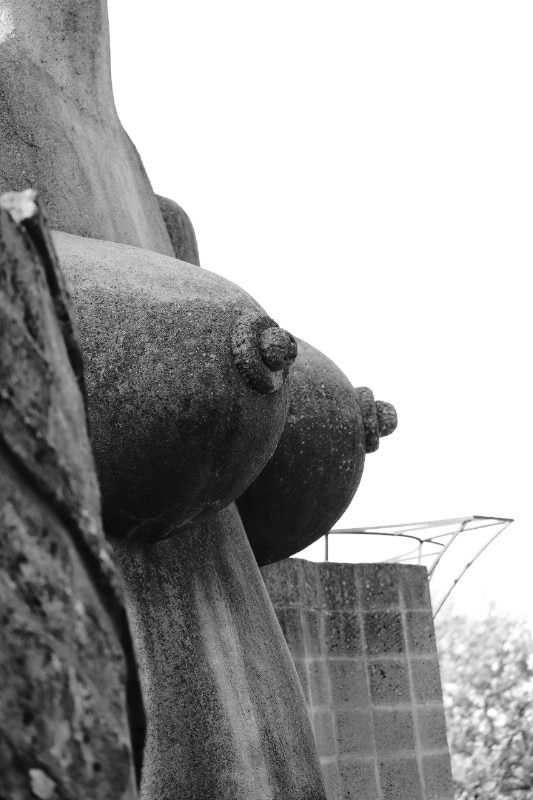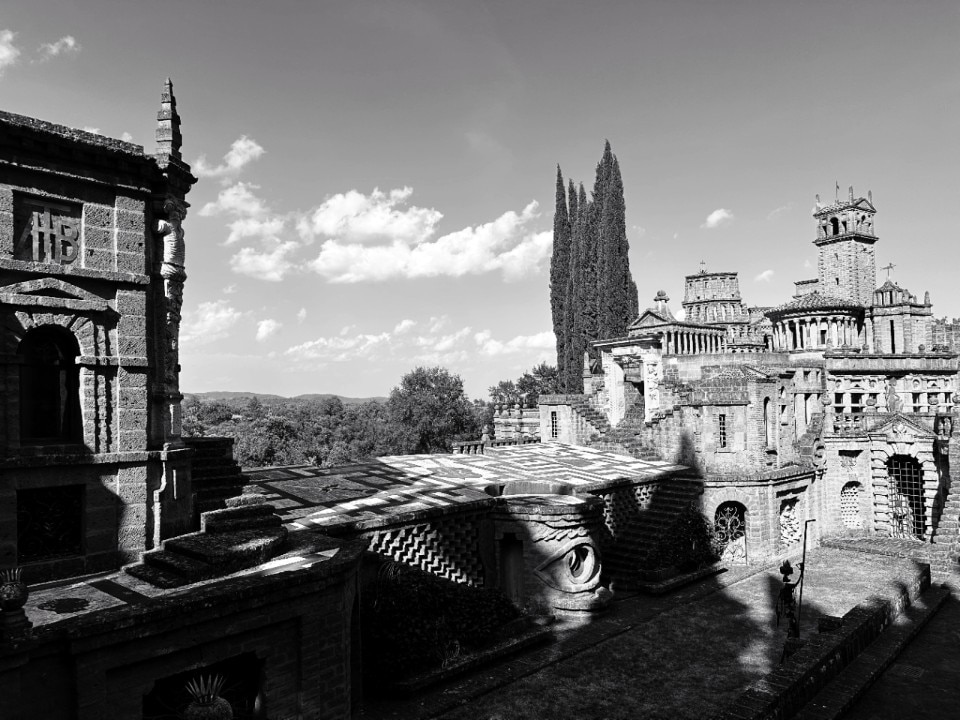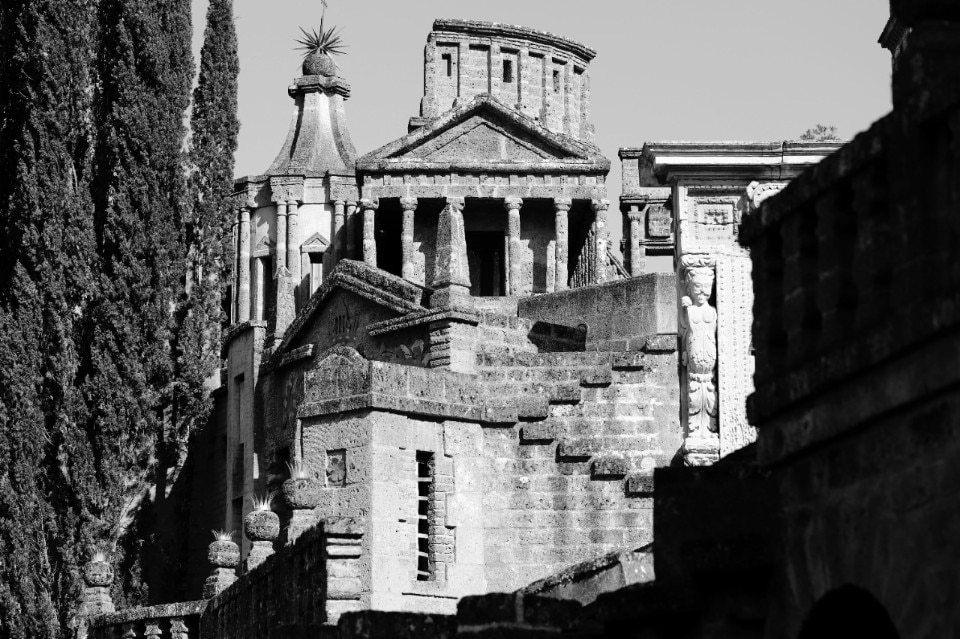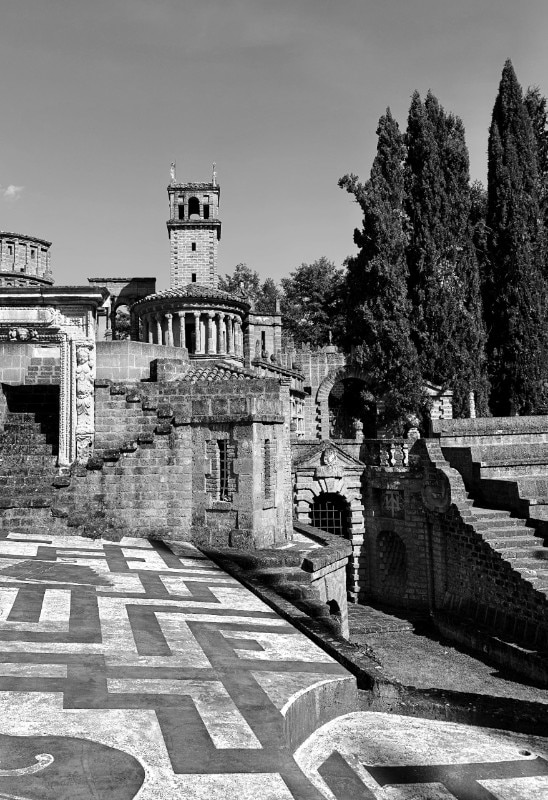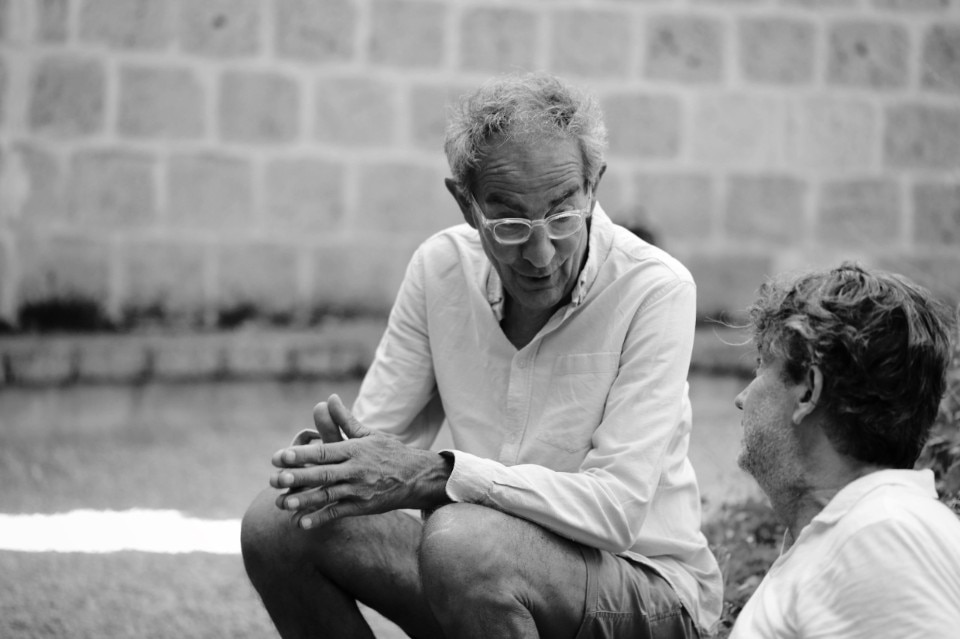This article will be published in Domus 1084, on newsstands in November 2023.
“Although I live among the people of this beautiful world, almost like one of them and working for clients in a serious and professional manner, in reality I live a secret, dream life.” Perhaps all architects of all periods have had a secret life, a forbidden desire, an impossible dream. No one, however, was ever able to realise it, especially in the 20th century. This is one of the reasons why La Scarzuola is an obligatory stop in Domus’s Italian Journey, because it is a magical gateway to understanding the country and the role that architecture has played here.
The fortunate man who succeeded was Tomaso Buzzi, who, “after spending the first half of his life satisfying his body, succeeded in the second half to satisfy his soul”. Born in Sondrio in 1900, Buzzi remains one of the most representative and mysterious figures of 20th-century culture. He was the only one who realised his secret dream, constructing not just a building but a city, where, however, he never wanted to live.

A professor of drawing at Milan Polytechnic and artistic director of Venini, he engaged with the leading designers of the first half of the century, including Gio Ponti who, in 1934, published three of his projects. Buzzi was a champion of Art Deco, becoming the darling of Milan’s upper middle class and, after moving to Rome, that of the so-called “black nobility” who helped build his legendary status. A sought-after and indefatigable man, he was one of the codifiers of Italian design, but also a garden designer, an outstanding draughtsman, a collector of classical art, and a restorer who was very fond of workshop practices, especially those of the craftsmen in his native Valtellina.
Although I live among the people of this beautiful world, almost like one of them and working for clients in a serious and professional manner, in reality I live a secret, dream life.
Tomaso Buzzi
In spite, or perhaps because of this, Buzzi forged a destiny for himself that was unlike that of his colleagues, a winding and eclectic path, never ceasing to question the classical and esoteric culture that emanates from every detail of his works, astounding the unsuspecting traveller who arrives here at La Scarzuola. Buzzi stumbled upon this place by chance. A few kilometres from Montegabbione, it lies near the church built in 1282 by Nerio di Bulgaruccio, of the family of the counts of Montegiove, next to a spring where, according to legend, Saint Francis stopped one night to make himself a bed and a hut out of marsh grass, or scarza.

 View gallery
View gallery

The ideal city built by Tomaso Buzzi
The feature Italian journey is created with the support of Jaguar Land Rover
Photo Valentina Petrucci

The ideal city built by Tomaso Buzzi
The feature Italian journey is created with the support of Jaguar Land Rover
Photo Valentina Petrucci

The ideal city built by Tomaso Buzzi
The feature Italian journey is created with the support of Jaguar Land Rover
Photo Valentina Petrucci

The ideal city built by Tomaso Buzzi
The feature Italian journey is created with the support of Jaguar Land Rover
Photo Valentina Petrucci
In 15 years of feverish work, from 1956 to 1971, Buzzi transformed these enchanted hills into the dark reverse side of the ideal Renaissance city. Perhaps an obsessive monument to his idea of architecture and his narcissism. If it is a monument, however, La Scarzuola is an inverted monument, a visionary and surrealist project made of staircases, stages, amphitheatres, towers, voids, solids, unfinished sculptures and windows opening onto nothingness. Wandering through it, it appears as a collection of references and anti-references, countless symbols, metaphors and suggestions that chase one another, mixing pagan mythology and Christian theology, Aztec astronomy and the spirit of Vedanta.
It is a sort of initiatory summa in search of truth through Buzzi’s seven amphitheatres of life: the Boat of Souls, the Whale of Stone, the Tower of Despair, the Stairway of Life, the Temple of Eros, the Well of Meditation and the Theatre of Bees, which were Buzzi’s favourite insects perhaps because of their incessant buzzing, their embroidering of treasure from flowers, just like him. Yet this, too, is an interpretation of little consequence because no one can truly say what La Scarzuola is. A labyrinth without a centre, an agglomeration of iron and tufa that Buzzi assembled and disassembled like a gigantic canvas, speaking on the phone from Rome or one of his endless trips, maddening his workers.

“La Scarzuola is made for ants,” he would say enigmatically, “for lizards in the sun, or to allow snails to leave their silvery trails on the stones, or silkworms to stay in their cocoons and produce their noble threads, or for bees to store their honey in their architectural hives; for butterflies, crickets and cicadas, or rather the ciandelline, the many sun worshippers.” At the end of our visit, this monstrous and enchanting project remains the mystery of an elusive man, which perhaps only one other person could unravel: Marco Solari, Buzzi’s nephew who, as a young graduate, abandoned a destiny of excellence in finance and many social privileges to move here, to a cell in the convent, behind the deconsecrated church.
He came to guard his uncle’s dream by leading a life of monastic rigour, but making La Scarzuola what Buzzi failed to make it, or perhaps didn’t want: his Never Never Land that really did exist for him. “La Scarzuola is Buzzi’s fantasy that manifests itself as infinite,” smiles Solari. “But its possibility to be materialised is finite because we live in space-time. So you try to do your best – but without overdoing it because otherwise the work would no longer make any sense.” His clarification explains something, but not everything.
La Scarzuola is made for ants, for lizards in the sun, or to allow snails to leave their silvery trails on the stones, or silkworms to stay in their cocoons and produce their noble threads, or for bees to store their honey in their architectural hives; for butterflies, crickets and cicadas, or rather the ciandelline, the many sun worshippers.
Tomaso Buzzi

Buzzi would not have built La Scarzuola for any other purpose than a highly cultured divertissement, giving free rein to the creative impulses that his patrons, though adoring him, would not indulge. Or that he dared not propose, feeling himself not to be wearing a tie, as he said, but naked. In any case, in this place Buzzi managed to condense Palladio and Borromini, Pirro Ligorio, Serlio, Escher and Dalì – the latter also came to see it – into a veritable “stone anthology” that certainly resembles a theatrical machine, but where there is no theatre. Or like a secular Golgotha without redemption.
Solari downplays once again. “No, La Scarzuola is basically a game, not to be taken seriously. That’s the reason for the theatrical style. Everything here is semi-serious. It’s a flight of fancy that the architect turned to stone. Anyone who comes here has to be flexible, circular like Tomaso Buzzi’s ideal city, which has no schemes, and like spirituality everyone can express it as they please.” It’s surely just as this delightful gentleman says with his disarming smile. After all, after 30 years at La Scarzuola, he seems somewhere between a bourgeois Milanese countryman and a Waldgeist thoroughbred in touch with the currents of Umbrian mysticism.

However, returning to our Land Rover – an extraordinary companion on our journey – La Scarzuola upends our first impressions. It is not at all Francesco Colonna’s Hypnerotomachia Poliphili. Nor is it Filarete’s Sforzinda. In these four hours of gazing and talking, we haven’t visited an ideal city, nor its alchemical parody. More likely, we’ve had a session of psychoanalysis, a sublime and terrible confrontation with archetypes that represent the diverse aspects of our psyche and mark the trials of our passage through this earthly world. If we are willing to encounter and confront them, visiting La Scarzuola leaves us with a greater awareness of our demons and our genius, as well as that of the architect. For this alone, and much else, we should be forever grateful to Tomaso Buzzi (and Marco Solari).

The feature Italian journey is created with the support of Jaguar Land Rover.


